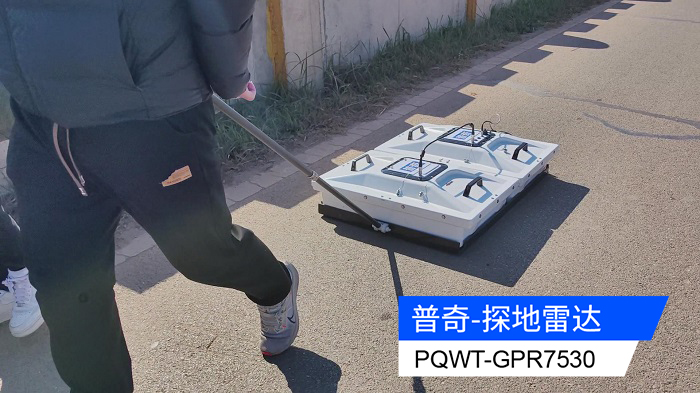Ground Penetrating Radar, as an advanced geophysical detection technology, has been widely used in many fields in recent years. By transmitting high-frequency electromagnetic waves and receiving the reflected signals, it is possible to detect the distribution and structural characteristics of underground media. So, is Ground Penetrating Radar applicable in the specific field of embankment detection? In this paper, we will discuss this question from the working principle of Ground Penetrating Radar, the needs of embankment inspection, and the application examples of Ground Penetrating Radar in embankment inspection.

Let's understand the working principle of Ground Penetrating Radar.Ground Penetrating Radar system is mainly composed of transmitter, receiver and signal processing unit. When working, the transmitter transmits high-frequency electromagnetic waves into the ground, and these electromagnetic waves will be reflected and refracted when they meet different media interfaces when they propagate in the underground medium. The reflected electromagnetic wave is received by the receiver, and then processed and analyzed by the signal processing unit, the structure and distribution information of the underground medium can be obtained.
Next, we analyze the needs of embankment detection. As an important part of water conservancy project, the safety of embankment is directly related to the life and property safety of the people. Therefore, it is of great significance to carry out regular inspection of embankment, discover hidden dangers in time and take measures to reinforce them. The main content of embankment inspection includes the structural integrity of embankment body, embankment base stability, leakage and other aspects.
So, is Ground Penetrating Radar suitable for embankment inspection? The answer is yes, Ground Penetrating Radar has the following advantages, which make it has a broad application prospect in embankment inspection:
1. High resolution: Ground Penetrating Radar is able to realize fine detection of underground media, which can clearly reflect the structure and distribution of anomalies inside the embankment and help to find potential hidden dangers.
2. Non-destructive detection: Ground Penetrating Radar does not cause any damage to the embankment during the detection process, and can realize continuous and real-time monitoring of the embankment.
3. Efficient and fast: Ground Penetrating Radar detects fast, and can complete the task of inspecting large embankment in a short time to improve the inspection efficiency.
In fact, Ground Penetrating Radar has been widely used in embankment detection. For example, in the embankment inspection of a certain lot, Ground Penetrating Radar successfully found the hidden dangers such as voids and cracks inside the embankment, which provided an important basis for the subsequent reinforcement measures. In addition, Ground Penetrating Radar can also be used for embankment leakage detection. By analyzing the propagation speed and attenuation characteristics of electromagnetic waves, it can determine whether there is leakage in the embankment.
Of course, Ground Penetrating Radar has some limitations in embankment detection. For example, for some special geological conditions (e.g., high water content, high conductivity strata), the detection effect of Ground Penetrating Radar may be affected to a certain extent. In addition, the interpretation and data analysis of Ground Penetrating Radar requires a certain amount of professional knowledge and experience, which makes it more demanding for the operators.
Ground Penetrating Radar has high applicability and advantages in embankment detection. Through the reasonable use of Ground Penetrating Radar technology, it can realize the comprehensive and fine inspection of embankment structure and provide strong guarantee for the safe operation of embankment. Of course, in the actual application, it is necessary to choose the appropriate detection parameters and methods to ensure the accuracy and reliability of the detection results.








